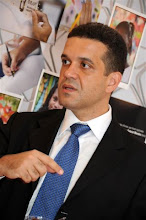- Back to Home »
- Sugar Cane and Ethanol
A historical opportunity is laid out ahead of Brazil: to remain the world’s largest fuel ethanol supplier. As reporter Janaína Simões tells in the article that she prepared for Unicamp Innovation, there are data indicating, by 2010, a 230% increase in world demand for ethanol – from the current 33 billion liters (8.7 billion gallons) to almost 80 billion liters (21 billion gallons).
In order to grow along with that demand, Brazil and the countries that are preparing themselves to take advantage of the same opportunity – in particular the United States, China and India, which accounted for 80% of the world’s output in 2005, according to the Renewable Fuel Association — must find a way to produce more ethanol without using up all the planet’s tillable area.
Unicamp Innovation has been following the world’s movement towards ethanol and other fuels produced from biomass; and the recognition of the international media – recent – of Brazil’s leadership in the area. This edition brings part of what we have published on the theme, as well as new articles, such as those about two small businesses financed by the Fundação de Amparo à Pesquisa do Estado de São Paulo (São Paulo State Research Foundation, Fapesp) that operate in the sugar and alcohol industry.
The State University of Campinas (Unicamp), in the city of Campinas, about 100 km (about 62 miles) from the capital city of the State of São Paulo, is Brazil’s second largest university according to academic standards. Celebrating its 40th anniversary in 2006, it boasts impressive numbers: nearly 30,000 students, almost half of which in Graduate courses, about 1,800 professors (93 percent of them PhDs), 20 teaching and investigation units, more than 50 Undergraduate courses, over 110 Graduate courses. Each year almost 1,300 Master’s Degree theses and nearly 750 PhD dissertations are defended. In its July, 2000 issue, Wire magazine described Unicamp as “Brazil’s answer to MIT,” saying that “it houses the nation’s number one computer science program and churns out future digerati who needn’t look far for a job.”












